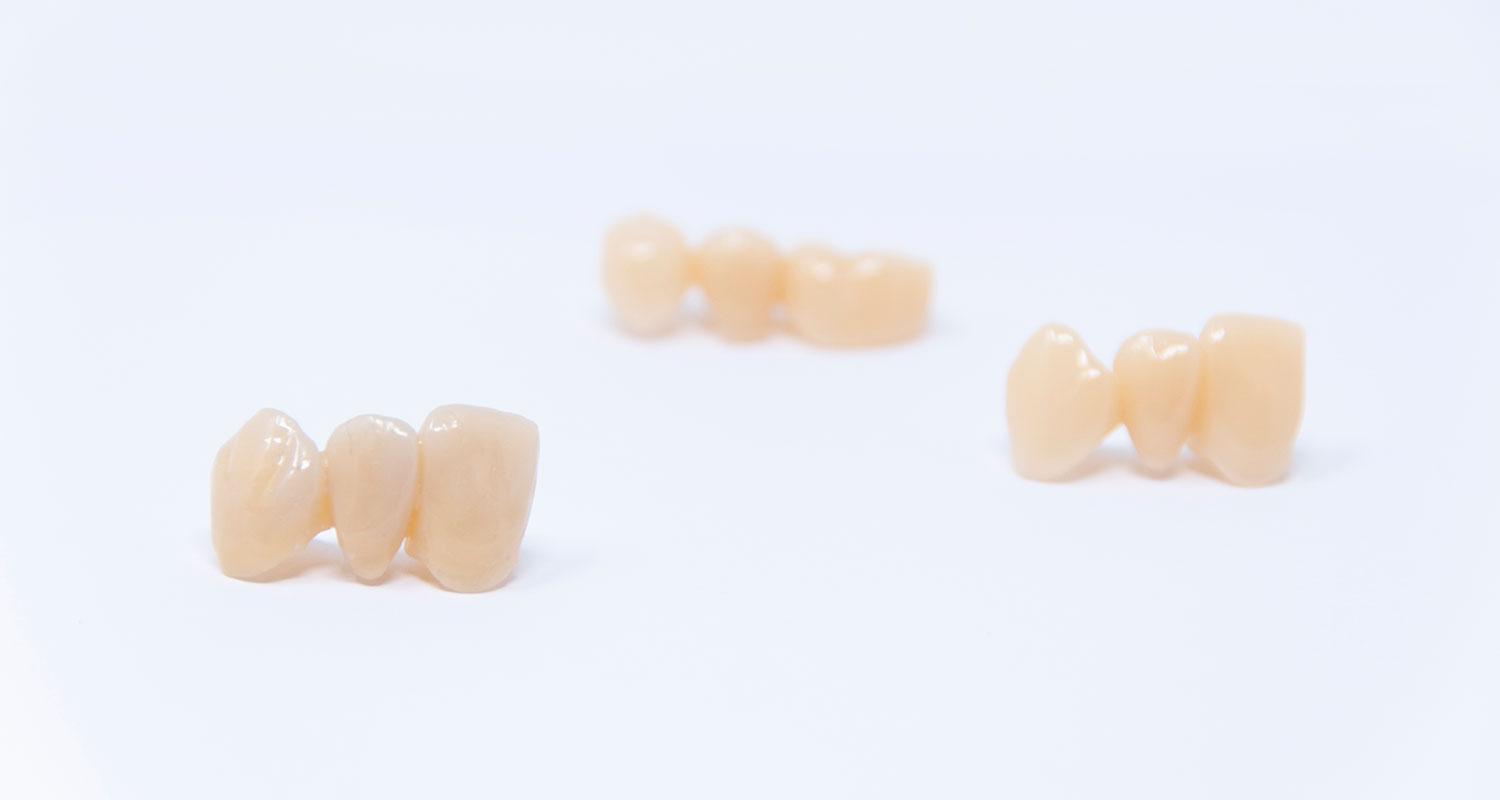-
PHONE
+39 0522 964949 -
PRICE LIST
Ask for the price list
HIPC or High Impact Polymer Composite is an amorphous cross-linking composite material, chemically inert, offering remarkably high physical values for their category.
Unlike PMMA, the indication of use of HIPC is for long-term provisional or permanent prostheses, as patient tests have been successfully proven a lifespan of more than 7 years. High workability, elasticity and the possibility to choose from most of the options offered by the VITA color scale, are unique characteristics of this type of material that allow the dental technician to use in a wide range of cases.

HIPC is frequently confused with another polymer, PEEK, with which it shares the greater elasticity compared to Zirconium, or more or less noble metal alloys, as well as perfect biocompatibility.
PEEK, on the other hand, is a material that is not proposed in VITA color scale and does not offer the colors from the sampling chart (color scale). The hardness of PEEK presents greater difficulties for the dental technician in processing, finishing and adhesion of the esthetic materials used for stratification.
HIPC shares with PEEK the fact that it is monolithic and monochrome, but only HIPC offers many of the color shades found in the VITA samples.

HIPC can be used both for bridges and crowns and glued to implants using specific resin /metal cements.
When pre-contacts are present and selective coronoplasty (contact points or occlusal surfaces), zirconium and layering ceramics need to be furnace polished because an abrasive ceramic can create problems on the opposite tooth (sandpaper effect) and structural problems (chips, cracks).
HIPC is instead easy to polish in the dental practice with felts or brushes and can be fitted on the patient in a single session, reducing labor and time, especially for those laboratories and dental practices that do not have a furnace suitable for polishing or glazing ceramics.

Even in the case of a work on implants, HIPC proves to be a valuable ally; it is resinous and has a less hard surface, it prevents any trauma of chewing load or at the level of the mucous membrane or at the level of the opposite tooth. The increased elasticity, combined with the fact of being monolithic, eliminates chipping problems, i.e. fracture or flaking of ceramics, increasing the final work quality in terms of safety and certainty.
HIPC can be pigmented superficially with the normal colors present in dental laboratories or layered, even only vestibularly, in case you want to customize the color, (especially for front teeth) with light-cured laboratory composites.
PROXERA® is the ideal partner for the production of semi-finished milled products in biocompatible monochrome HIPC material. Starting from the .stl file, machining obtained from the production process can count on a general quality, a surface finishing and an esthetic appearance appropriate to the examination stage and finishing by the dental professional.
© Copyright 2021. All Rights Reserved. Proxera S.r.l. - Via Marchesi, 1 - 42022 Boretto (RE)
C.F. / P.IVA / Reg. Imp. RE 02741880351- R.E.A. 309389- Cap. Soc. € 30.000,00 i.v.a.
Information on the processing of personal data | General terms of sales | Cookies Policy